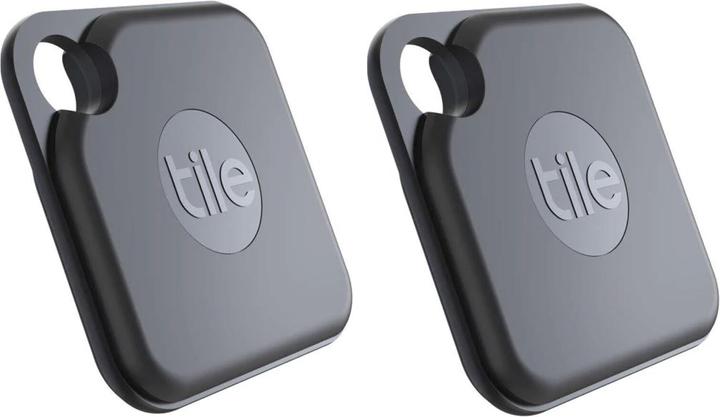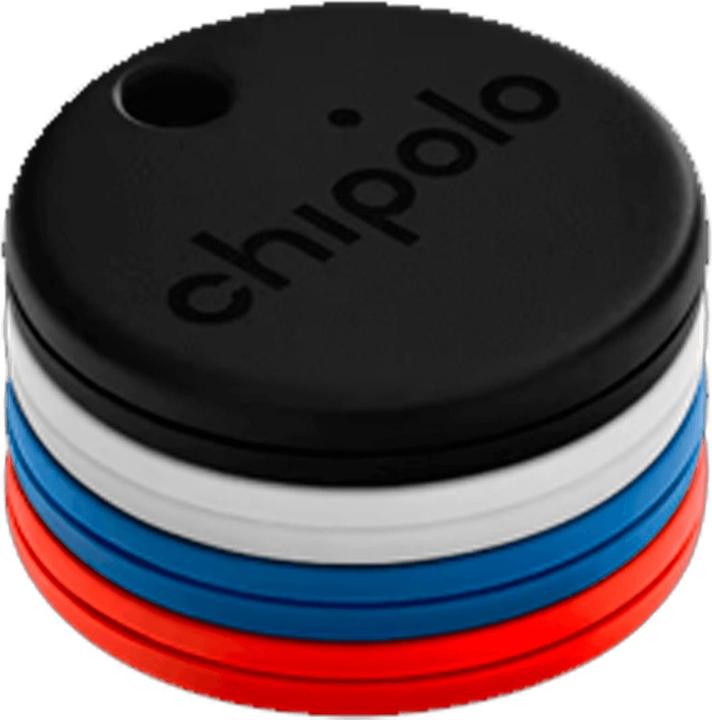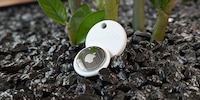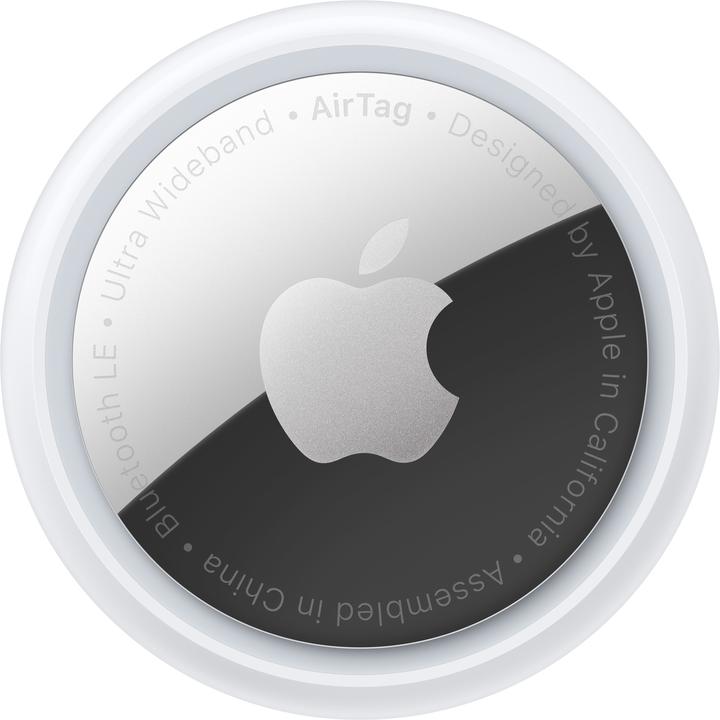

Apple AirTag review: better than the competition?
Bluetooth trackers help you find things you’ve lost. Keys. Wallets. That kind of thing. Now Apple is in on it with the launch of its AirTags. We find out how well they work by testing them against Tile and Chipolo trackers.
Never lose anything again. That’s what Apple is promising with these Bluetooth trackers. You attach them to your most important possessions so you can find them again at any time via app. Apple have called its Bluetooth tracker the AirTag.
Apple’s promise isn’t anything new. Tile announced it long before. In fact, I tried out (link in German) Tile’s Bluetooth tracker myself in 2018. I had mixed feelings about it at the time. You couldn’t change the in-built round cell battery when it died. That meant you had to buy new Tile trackers rather than new batteries once a year – that’s about as long as cell batteries last. Not cool. Now that’s no longer the case, as the batteries can be replaced. I’m certainly happy about that.
The third player in the Bluetooth dog-eat-dog environment is Chipolo. In this part of the world, it’s not as well known as Tile or Apple’s AirTags, but the Community reckons it’s cheaper and does at least just as good a job.
Samsung has also been offering a Bluetooth tracker since 2020, dubbing it the Galaxy SmartTag. The «Galaxy» in the name makes reference to the fact the trackers are only compatible with Samsung Galaxy smartphones. As I don’t have one of these phones, I decided to leave it out of the tests in this review.
Functionality and specs
Which tracker works with which device or operating system?
Apple AirTag
Apple AirTags only work on Apple devices. Using Apple’s «Find My» app – which is on every Apple device as standard – you can quickly and effortlessly pair the tracker to your iPhone or iPad. That’s provided your iOS is running on at least version 14.5 and your Bluetooth is activated.
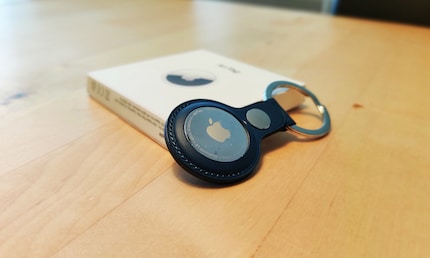
Set-up is quick, hardly taking more than three or four minutes. It’s what we’re used to from Apple.
What else?
- Bluetooth range: about 100 metres (without walls)
- Water-resistance: waterproof and dust-proof (International Protection IP67)
- Voice assistant: Siri
- Battery type: CR2032 round cell battery
- Batteries you can replace yourself? Yes
- Battery life: approx one year
- Dimensions: 3.2 cm diameter, 8 mm thickness
Tile Pro
Tile’s best tracker that’s priced on a par with the AirTags is the Tile «Pro» version. You need the Tile app to pair it with your phone. You can find this in the Apple App Store as well as in the Google Play Store.
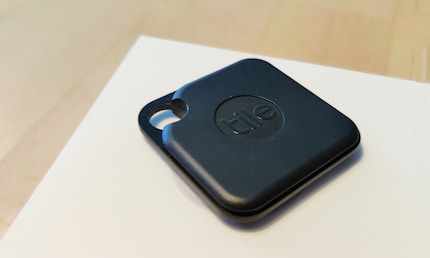
What else?
- Bluetooth range: about 122 metres (without walls)
- Water-resistance: water resistant (IP55)
- Voice assistant: Siri, Alexa and Google Assistant
- Battery type: CR2032 round cell battery
- Batteries you can replace yourself? Yes
- Battery life: approx one year
- Dimensions: 4.2 × 4.2 cm, 6.50 mm thickness
The cool thing is, if you lose your phone you can press twice on a small button on the Tile to make your phone ring. Even if you have it on silent or vibrate. That’s something Apple’s AirTags can’t do.
Chipolo One
From the Chipolo range, I tested the Chipolo One tracker. It also pairs with the phone via the Chipolo app. You can find it in the Apple App Store as well as in the Google Play Store.
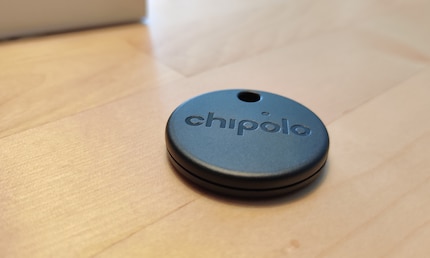
What else?
- Bluetooth range: about 60 metres (without walls)
- Water-resistance: resistant to water sprays (IPX5)
- Voice assistant: Siri, Alexa and Google Assistant
- Battery type: CR2032 round cell battery
- Batteries you can replace yourself? Yes
- Battery life: approx two years
- Dimensions: 3.8 cm diameter, 6.4 mm thickness
What’s just as cool as the Tile tracker: pressing a button twice on the Chipolo One makes your smartphone ring – even if you have it on silent or vibrate.
Bluetooth range and search feature
Imagine this. It’s late. And almost time for the bus. You’ve got an important meeting today (in a world where there’s no pandemic). It’s not the kind of day you want to get to work late. You’ve got your shoes, jacket, bag and everything else there ready. Everything except your car keys. Dammit.
Enter: the Bluetooth tracker.
Apple AirTag
Open the «Find My» app and click on «Devices» at the bottom. This is where you select the AirTag that you’ve attached to your keyring. You have the option to play a sound to help you locate the tracker or use the «Search» feature to guide you directly to it. The latter option is only available on iPhone 11 and 12. That’s because these phones have the U1 chip, which lets them communicate with the AirTag with accurate precision using ultra-wideband connection.
This video gives you an idea of what it looks like:
The AirTag isn’t particularly loud. While it’s not as quiet as the smartphone microphone wants you to think – I could even hear the high tone in the living room – the AirTag was by far the most quiet of the three trackers I tested.
Nevertheless, the «Search» feature with its visual guiding is super and works remarkably well, despite the fact I first had to position myself in a direct line to the AirTag, unimpeded by any walls.
Tile Pro
For the most part, the Tile Pro works in exactly the same way. In other words, clicking on the disappeared tracker makes it emit beeps so you can find it in the flat.
However, the Tile pro doesn’t boast a visual search feature like the AirTag.
Chipolo One
And so we come to the last of the bunch. I turn on the app, click on the relevant tracker and somewhere in the distance, I hear something beeping quite loud – the loudest of the three trackers, in fact. It works.
The cool thing: with the Chipolo model, I can get the app to send me push notifications if I go too far away from the tracker. For example, if I’m going home from work and leave my wallet in the office.
Tile also offers this feature, but only if I pay 3 francs per month or 32 francs per year for a Tile premium subscription. The premium subscription also includes a 30-day location history.
Lost outside the Bluetooth range
But what happens if I lose the Bluetooth tracker outside of my phone’s Bluetooth range? This is where the community comes in. If someone with the same app is near your tracker while they have Bluetooth activated, you’ll be informed of its whereabouts. That’s right – you’ll be told. Not the community. Doing it any other way would be silly. Can you imagine the push notifications on your phone? «L from S has lost their wallet nearby.» Oops. Of course we’d want to, erm, help find it. Hehe.
Assuming 99% of people are decent, that wouldn’t be a problem. What would be more of an issue would be the other 1%. An open door may tempt a saint. In a nutshell, that’s why none of the manufacturers have their apps set up to inform the community if, when and where they’ve contributed to a search for a lost Bluetooth tracker. The search signal is also encrypted.
So, who can contribute to a search? In terms of Apple’s AirTags, any Apple device can be a Bluetooth tracker, whether it’s an iPhone, iPad or Macbook. As long as Bluetooth is activated. The same goes for Tile and Chipolo, with the difference being that the contributing smartphone has to have the Tile or Chipolo app.
Apple AirTag
It’s time for a field test. Crime scene: Shoppi Tivoli shopping centre in Spreitenbach. There are a lot of people about. In other words, potentially a lot of Apple, Tile or Chipolo community members. The idea is that I «lose» the tracker somewhere. I head off and then later when I’m at home, I mark the tracker as «lost».

My theory is there are probably more Apple devices around than smartphones with the Tile or Chipolo app installed. So, if the AirTag isn’t found first, I’ll eat my hat. Or a Bluetooth tracker.
Let’s see.
And that’s the test started. I place all three trackers under a mannequin’s skirt in front of a clothes shop. Hundreds of people walk past here every day, now and then lingering in front of it. That should give the trackers enough time to ping potential smartphones. What’s more, the long skirt hides the «lost» tracker. That is to say, my field test doesn’t involve me actually losing them.
It’s 12.30pm.
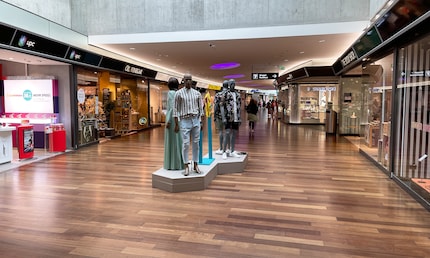
I’m back at home. It’s 12.39pm.
First, let’s look at Apple. The «Find It» app immediately shows that the AirTag was last seen in Shoppi Tivoli a minute ago. That’s very good. It means an Apple device has already localised the AirTag before I could even mark it in the app as «lost». Impressive.
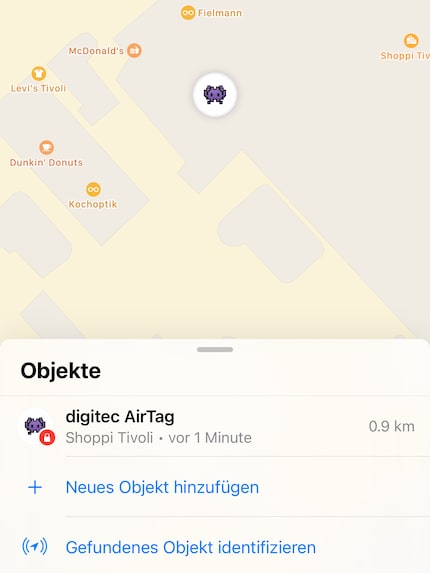
I activate the «Lost» mode all the same. I still want to see if I get a push notification as soon as the AirTag is pinged again.
Hardly a minute goes by before it happens again.
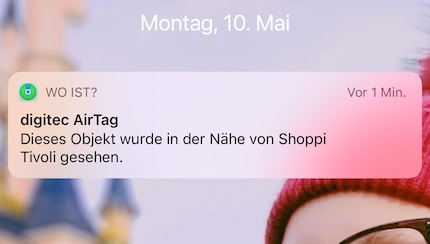
Very nice. Let’s see how the Tile tracker got on.
Tile Pro
12:39pm Nothing.
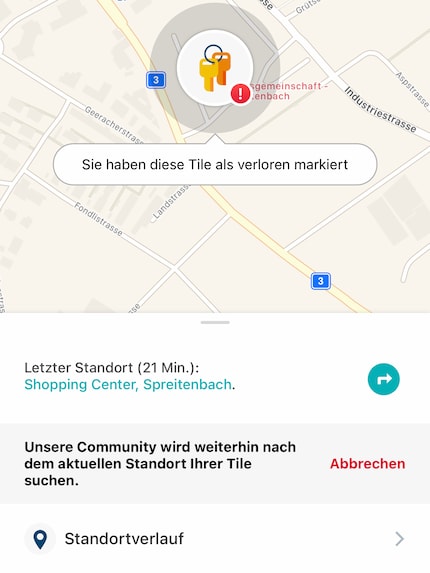
Admittedly, the Tile app does show me where my Tile Pro was last seen – namely in Shoppi Tivoli – but that was at 12:18pm. And then when it was last in contact with my smartphone. Which is essentially my own ping.
I mark the Bluetooth tracker in the app as «lost» and wait.
4.15pm: nothing.
6.30pm: zilch.
The day went by without a single member of the Tile community tracking my Tile Pro. How did it go with the Chipolo One?
Chipolo One
Not any better. Worse even.
12.39pm: the Chipolo app last pinpointed the tracker at 12.13pm at my home. If the app is anything to go by, I never left the house. So, if I had really lost the tracker, I wouldn’t know I needed to start my search in Shoppi Tivoli.
Lousy.
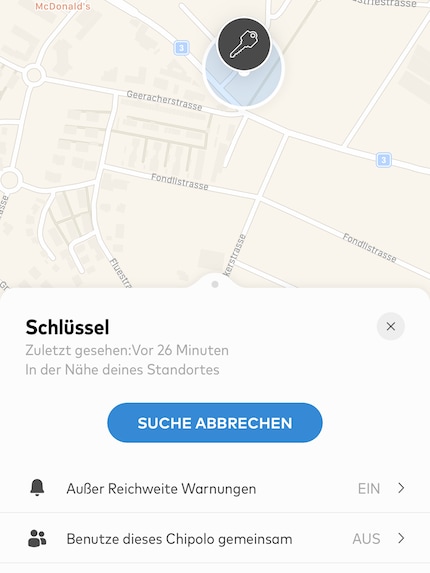
As with the Tile, I activate the «Lost» mode and wait.
4.15pm: nope.
6.30pm: yeah, it’s still nope.
It’s the same disappointing verdict as with the Tile. I didn’t even get so much as a live warning that I’d left the tracker’s range. I go into Shoppi Tivoli and pick up all three trackers.
Verdict: Apple wins
First, let’s look at «within Bluetooth range». All three manufacturers easily stick to their promise to help you find lost items. The Chipolo One is super because it’s particularly loud. The fact that the Tile has twice as much Bluetooth range as the competition doesn’t count for much as far as I’m concerned. Not at my place anyway. I’m not sure if you’re in a similar situation. But my flat isn’t 100 metres long to begin with. Apart from which, the walls weaken the signal anyway.
Then there’s Apple. Its trackers offer particular benefits to those who have an iPhone 11 or 12. Their U1 chips allow them to create an ultra-wideband connection between smartphone and AirTag, which guides you to the tracker visually. It’s fantastic. Apart from that, it’s the same story as with Chipolo and Tile in that the Apple trackers do what they’re supposed to – mainly beeping.
Now let’s compare them according to the ultimate task... which tracker gets found when it’s lost outside your own Bluetooth range?
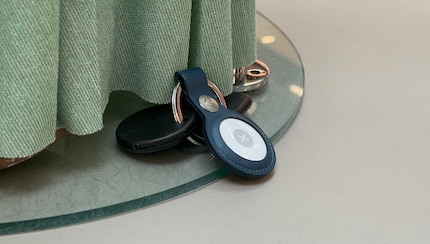
The winner is quite clearly Apple. The AirTag was the only tracker that constantly pinged the whole afternoon. No wonder when it was being pinged by a whole armada of Apple devices that are around.
Whereas, the Tile and Chipolo trackers were only pinged when someone went by who had a Tile or Chipolo tracker and had the app installed on their smartphone. That makes the chances of you finding one of your trackers outside your range distinctly less. If my field test is anything to go by, your chance is about zero. I wouldn’t get my hopes up about finding my house keys with Tile or Chipolo if I can’t even find them in a busy place like Shoppi Tivoli in Spreitenbach.
So, if you have an Apple device, you’re in luck. Otherwise, Bluetooth trackers probably won’t be so appealing to you. And as far as I can see, I don’t need to eat my hat. Or a Bluetooth tracker.
A point about data protection
Bluetooth trackers are there to tell you where your possessions are. To do that, Apple, Tile and Chipolo have to collect data about your location. But this is never saved to the tracker itself.
Here’s exactly what all three manufacturers collect:
- Your location as well as the location of the paired tracker
- How and how often you use the app
- The date and time of your searches in the app
- Information about the model of your smartphone and its operating system
Apple, Tile and Chipolo confirm that location data on their servers is always encrypted. This means that even the manufacturers don’t know where you or your tracker are.
They promise that no data will be passed on to third parties or used for marketing purposes. But that only applies if your account isn’t connected to one of your social media accounts. Like Facebook, for example. It goes without saying that Apple’s, Tile’s and Chipolo’s privacy policy doesn’t apply to Facebook, Google, Twitter and co.
How safe are the trackers themselves?
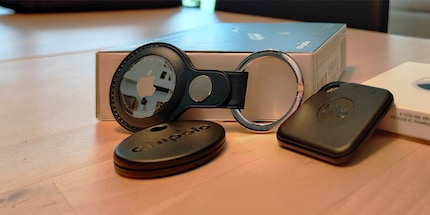
All manufacturers assure us that the data exchanged between your smartphone, the tracker and their servers is encrypted and kept confidential. But you won’t get a 100% guarantee anywhere. Apple’s AirTag, for example, has reportedly already been hacked(link in German) by jailbreaking. Thomas Roth, a German security researcher, was apparently able to modify the tracker software.
Here’s how it works: let’s assume you find an AirTag that’s not yours. Not because the app sent you to it. That doesn’t work. You just happen to have found the tracker lying around somewhere. Using «Find My» app, you can link yourself to the AirTag and access a «found.apple.com» website. It shows you information about who owns the AirTag. But Thomas Roth manipulated the software on his «lost» AirTag so it could show a random URL. Like say a site that looked similar to found.apple.com that also asked for personal data – a classic phishing attempt.
It’s not yet clear to what extent Apple can or will solve this problem.
I write about technology as if it were cinema, and about films as if they were real life. Between bits and blockbusters, I’m after stories that move people, not just generate clicks. And yes – sometimes I listen to film scores louder than I probably should.



